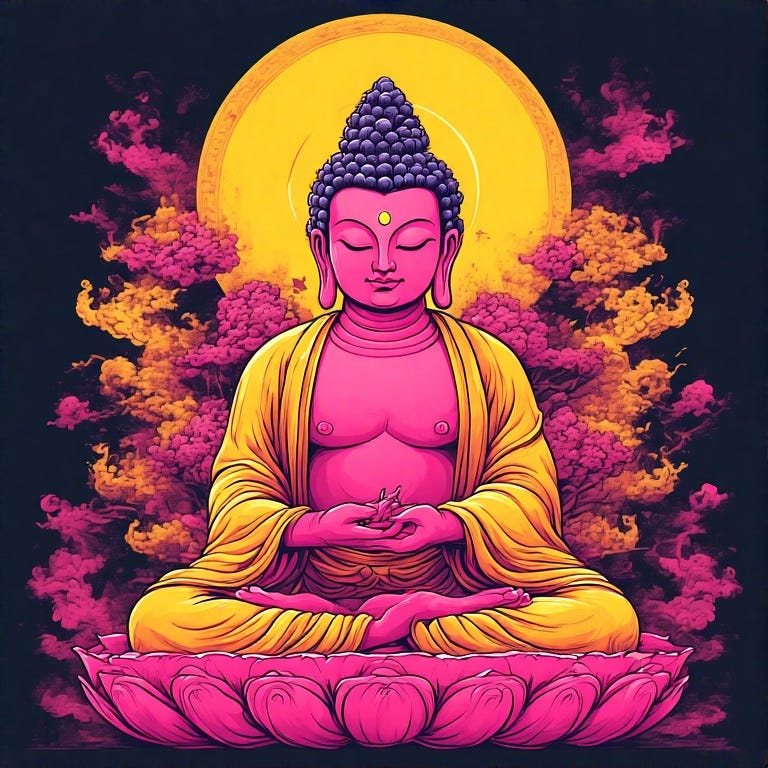Was the Buddha the first Bayesian?
People can come to Bayes' theorem intuitively, and it was likely the Buddha was one of the first...
Sometimes you come across something modern that feels like it’s accidentally ancient. Bayes’ theorem is like that.
It’s a little formula from probability theory that tells us how to update our beliefs based on new evidence. But if you look closely — and maybe a little sideways — it starts to sound like something else entirely: a meditation.
Bayes’ theorem is usually written like this:
It tells us: what’s the probability of a hypothesis H being true, given an observation E? But the formula contains four different terms. Four moving parts.
And I started to wonder: what if each of those terms — each part of this loop between belief and evidence — wasn’t just a calculation?
How could we raise each to a certainty?
And what if each was a truth?
Like, say... a Noble Truth?
Let’s walk through them.
P(H|E) — The probability of a hypothesis, given an observation
→ This implies: “There must be something observed, if I am observing.”P(E|H) — The probability of an observation, given a hypothesis
→ This implies: “If there is something observed, then there is observation.”P(H) — The prior probability of the hypothesis
→ This implies: “There is something — existence itself — even before observation begins.”P(E) — The total probability of the observation
→ This implies: “Observation happens, even if nothing is ‘really’ there to see.”
At first, they just feel like parts of a loop. But each of them — in their own way — is a certainty.
Each is something you cannot doubt without presupposing it.
Descartes had his “I think, therefore I am.”
This is closer to: “Observation, therefore observation; existence, therefore existence.”
Each one pulls itself up by its own bootstraps.
Now… hold that in your mind, and look at the Four Noble Truths in Buddhism:
Dukkha — There is suffering
Samudaya — There is a cause of suffering
Nirodha — There is a cessation of suffering
Marga — There is a path to that cessation
If you treat Bayes’ theorem not as a formula for doubt, but as a system of certainty — these truths almost map on directly.
Four Noble Truths as Four Probabilities of 1
None of these are speculations. They’re not beliefs. They’re certainties baked into the structure of conscious experience.
They are the only things that seem to survive total skepticism. And they describe not just a theory of truth, but a structure of awakening.
This isn’t religion, and it isn’t math
It’s something stranger.
It’s the idea that suffering, awareness, existence, and emptiness might all be as certain as each other.
That what the Buddha realised, sitting beneath a tree in ancient India, was a kind of recursive probability — a loop of consciousness observing itself, and finding no way out. Except, maybe, to stop clinging to the loop.
Bayes’ theorem wasn’t around yet. But the bones of it were. The internal architecture of awareness — how one thing follows from another, and how it never escapes its own gaze.
The Buddha didn’t need algebra to see that.
But it’s kind of wild that we can see it now, through an equation that was never meant to talk about liberation — and yet somehow... does.







Well I for one find this interesting